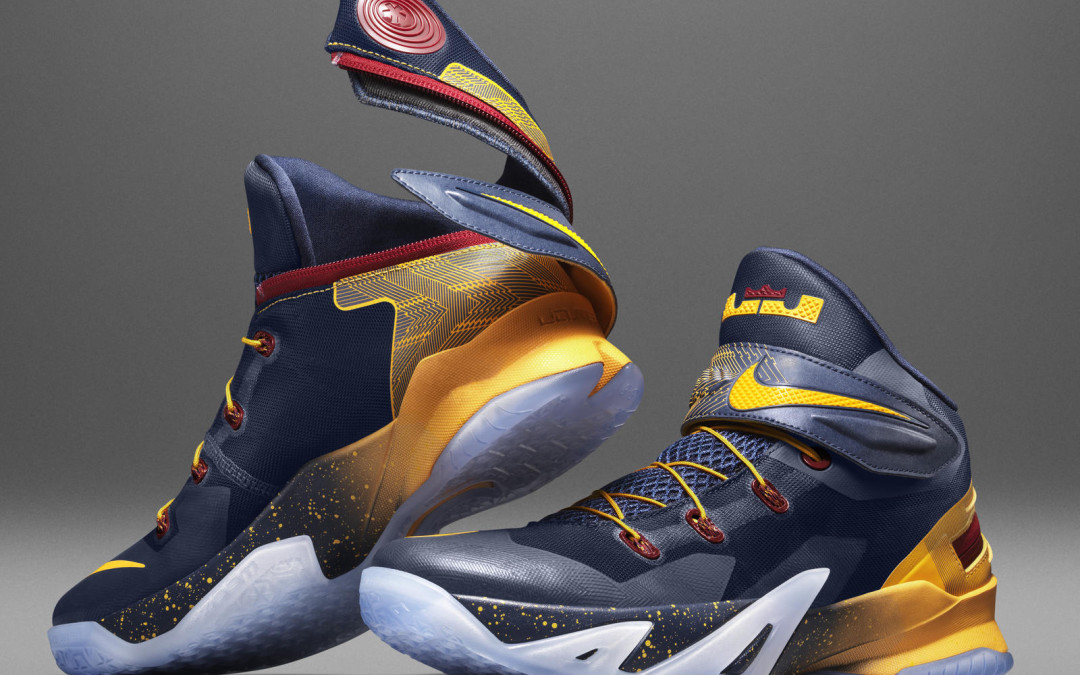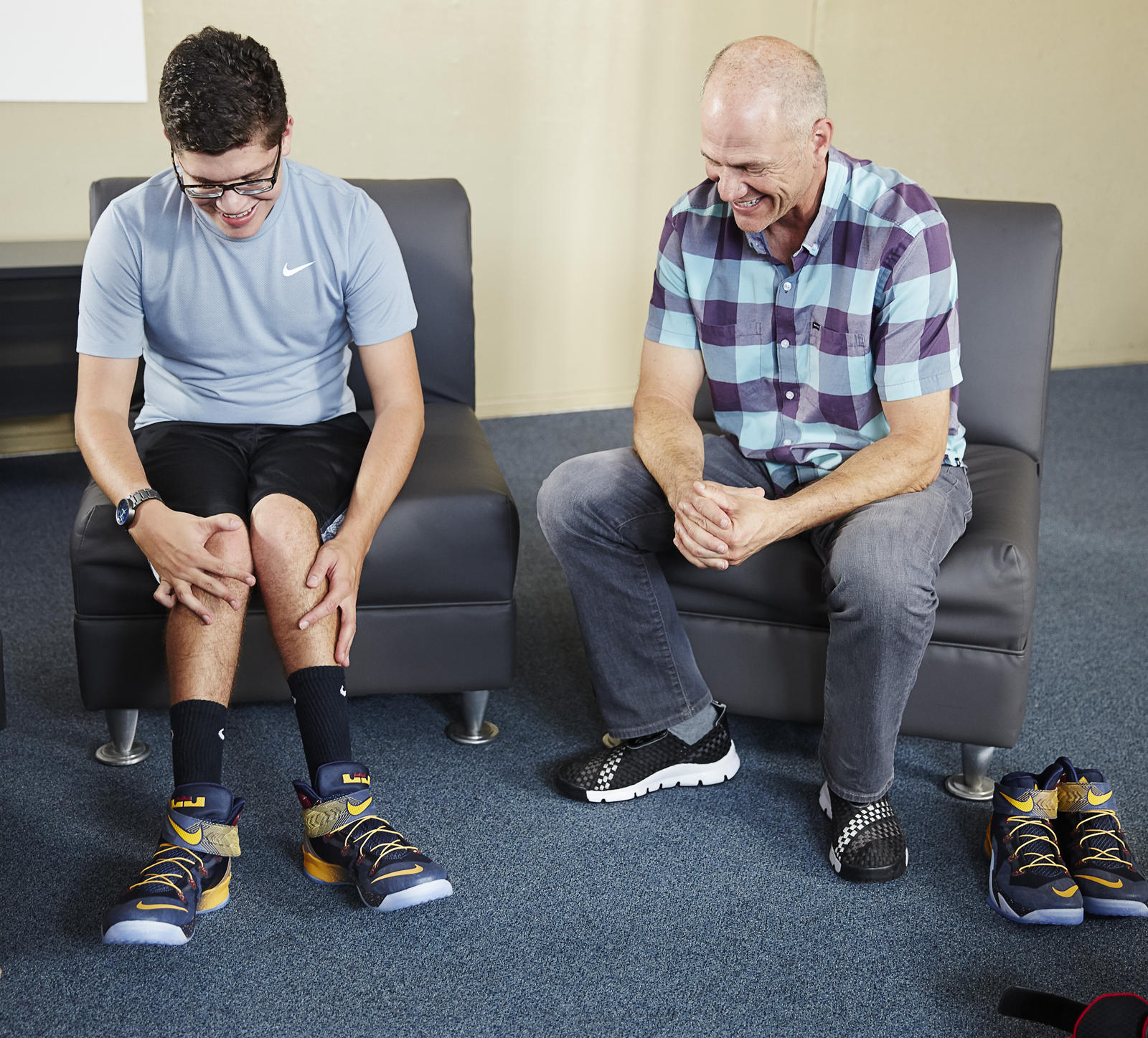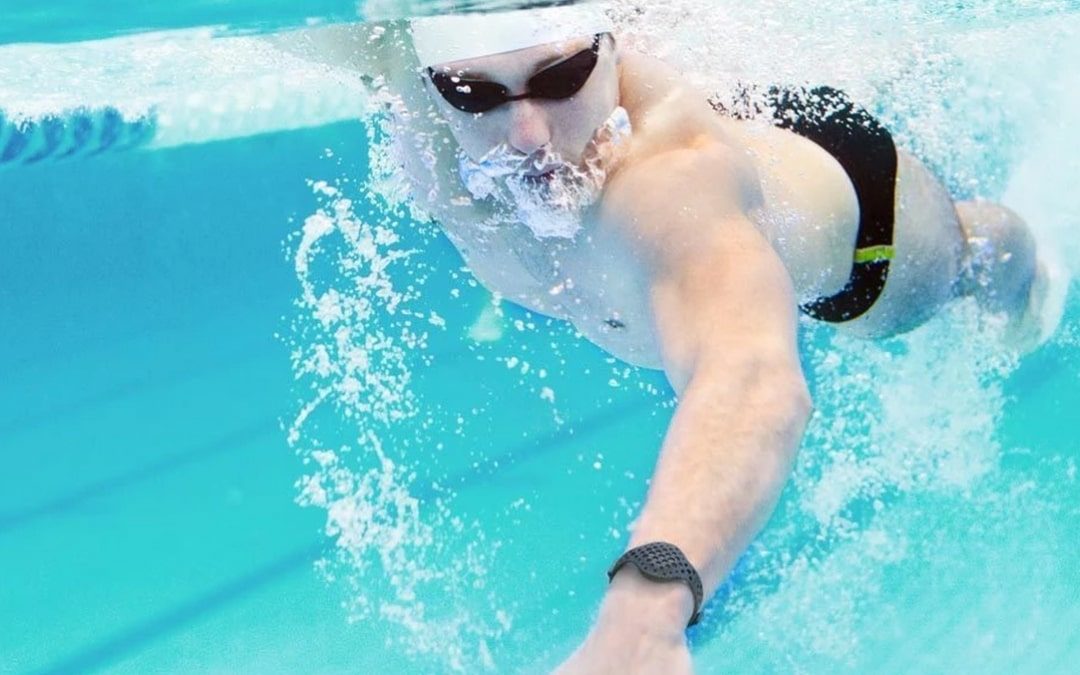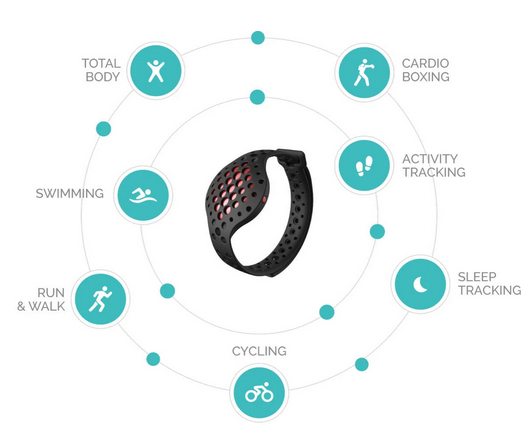
by Don Basile | Aug 19, 2015 | Sports, Tech
From Bill Bowerman’s waffle sole invention in 1970 to the development of Flyknit technology in 2012, Nike has been on the forefront of innovating the athletic shoe industry for over four decades. But one area of sneaker innovation that’s been overlooked up until now has been footwear options for disabled athletes.
Nike shoe designer Tobie Hatfield began working on the easy entry shoe when CEO Mark Parker received a call about Nike’s first employee, Jeff Johnson, suffering a stroke that left one side of his body non-functional. They wanted to design a shoe that would be easy for a disabled person to put on without assistance. From there, Nike brought its innovation to a wider audience when a letter from teenager Matthew Walzer went viral on social media. In his letter, Walzer, who was born prematurely and has Cerebral Palsy, asked for Nike’s help in being able to put on his sneakers without assistance from his parents when he headed off to college in a year. His design input on what would make a shoe more accessible to a disabled person was instrumental to Hatfield in creating what would become the Zoom Soldier 8 FlyEase. One of Nike’s mantras is a quote from Bill Bowerman:
“If you have a body, you’re an athlete.”
In the case of disabled athletes, having a shoe with zippers instead of laces can be incredibly helpful. But this doesn’t mean that Walzer wanted to wear ugly velcro strip orthopedic shoes. Instead, Hatfield designed a cutting edge technology and attractive basketball shoe design based around a back entry zipper that he envisioned based on doors swinging on hinges.


When Walzer first received his shoes in 2012, he felt a wave of independence because of the simple act of being able to put on his own shoes–for the first time in his life. Ever since, Walzer has given valuable design input that led to the recent release of Nike’s first shoe widely available to disabled athletes. The Zoom Soldier 8 FlyEase also incorporates elements from the LeBron James basketball shoes. A limited edition LeBron Soldier Eight FlyEase are now available, marking a great step forward for one of the world’s most popular sports companies creating a product for less traditional—but ultimately even more inspiring—athletes like Matthew Walzer.

by Don Basile | Aug 12, 2015 | Sports, Tech
The fitness tracking wearable tech market is exploding right now, and on the forefront of latest innovations in the ever-growing industry is Moov Now: one part fitness tracker, one part artificially intelligent personal trainer. Launched as a Selfstarter campaign in February 2014, Moov generated over $1M in presale orders in just two weeks—meaning founders Nikola Hu, Meng Li, and Tony Yuan were really on to something. The personal trainer aspect takes this tracker beyond its myriad competitors.
Worn as a bracelet, Moov pairs with an app to train the wearer in 5 sports: running, cycling, swimming, boxing, and a 7-minute bodyweight workout for the time-crunched or the traveler. Unlike other popular trackers like Fitbit, which counts steps, Moov tracks movement within a 3-D space. An accelerometer, a gyroscope, and a magnetometer make up the hardware that allow this 3-D mapping to occur in real time—all without the use of a camera, and all within a surprisingly slim bracelet design.

Paired with the device’s data collection is an algorithm that makes sense of the data to deliver a Siri-voiced personal trainer, who coaches users with tips on achieving proper stride alignment and lifting technique. Creating a custom training plan, working out with Moov a few times earns you a certain level. Running, for example, has 69 different levels and 5 modes tailored to weight loss, speed training, and so on. Your personal trainer will encourage you to reach for higher levels and give you flack for slacking off, too. It’s all about accountability and feedback—the two keys to sticking with any workout regimen long enough to see results. At $59 apiece with pre-orders available and a scheduled fall release, the Moov Now bands seem streamlined, affordable, and well positioned to disrupt the wearable tech market and a whole bunch of (human) personal trainers out there.
Images via Moov

by Don Basile | Jul 24, 2015 | Sports, Tech
Fans who watched this summer’s semifinals of the Women’s World Cup let out a collective grimace of pain in the first half when Germany’s Alexandra Popp collided with U.S. midfielder Morgan Brian. The two players both went for a header and crashed noggins full force. The impact left both players on the ground, and Popp’s head was gushing blood. Still, after four minutes of medical attention and just one minute off the field, both players were cleared as not having sustained concussions, and allowed to return to the game.
Soccer is among the many sports under scrutiny lately for potential long term damages caused by head injuries. Critics argue that games should have a neutral doctor on hand, as opposed to team doctors who some feel allow players back into play before it’s medically sound to do so. Urging FIFA to change its rules—only three subs are permitted per game, whether or not any player sustains an injury—many fans question whether safety is a top priority on the field.
One solution that FIFA would do well to implement is wearable tech that could measure the impact of players’ collisions. Such tools are already being implemented in college football through the company i1 Biometrics, which has developed mouth guards capable of collecting real time cranial impact data. This data is then transmitted to team doctors on site via cloud based technology, allowing them to make more objective decisions as to the severity of a player’s injury. This new technology has the ability to revolutionize the way an athlete’s trauma injuries are diagnosed and treated. The company’s mission statement is driven by some sobering statistics: more than 4 million concussions and brain injuries occur every year from sporting collisions.

While the technology would have to be implemented in a more wearable way for soccer players, who don’t generally wear mouthguards, the strides in measuring cranial impact data should eventually carry over to this sport. In addition to collisions between players, studies have shown that heading the ball can lead to permanent brain damage over time. Last year Scientific American interviewed Robert Cantu, professor of neurosurgery at the Boston University School of Medicine, on the topic. His research has shown that “heading a soccer ball can contribute to neurodegenerative problems, such as chronic traumatic encephalopathy.”
With the issue placed squarely in the news again when millions witnessed the painful collision between two of the Women’s World Cup top soccer stars, it’s more likely than ever that FIFA will have to answer to its critics. In addition to providing neutral doctors, wearable tech like that made by i1 Biometrics—who hope to implement their technology in headbands as well as mouth guards in the future—could revolutionize the way head injuries are treated in soccer, football, and a whole host of other contact sports.
Images via: Flickr/clapstarr; i1 Biometrics






